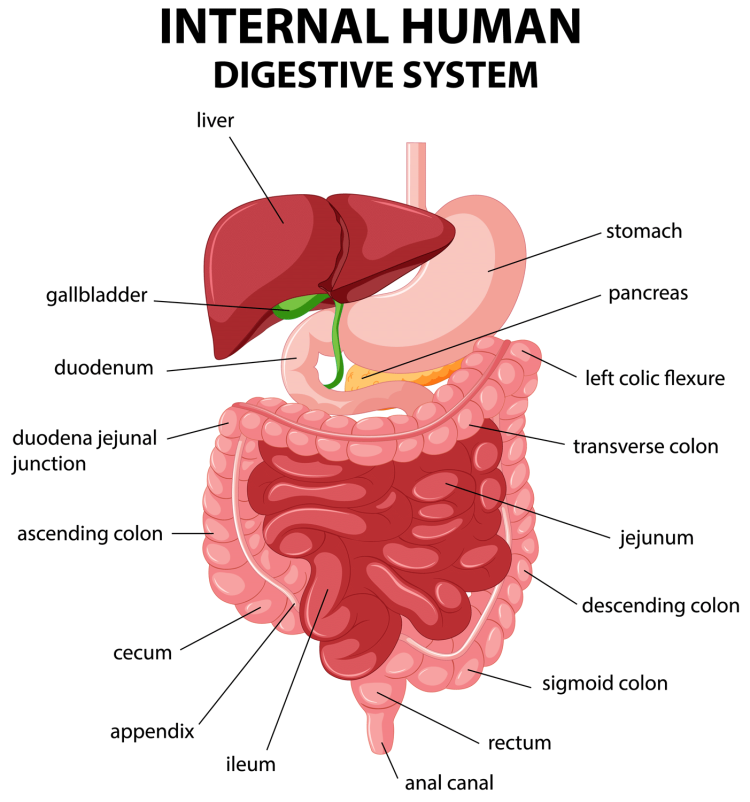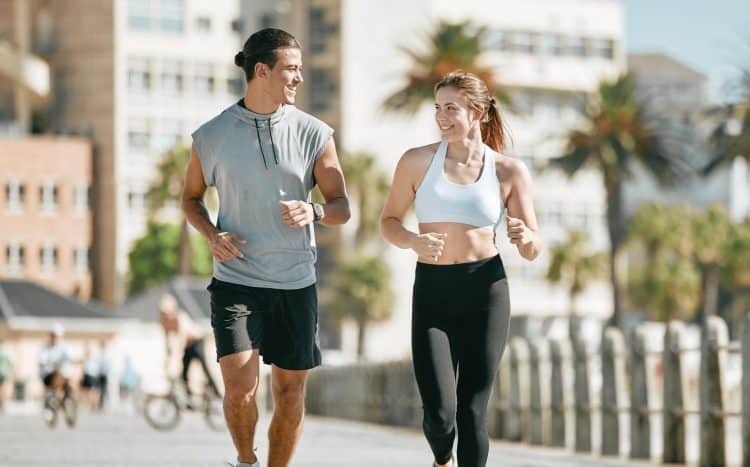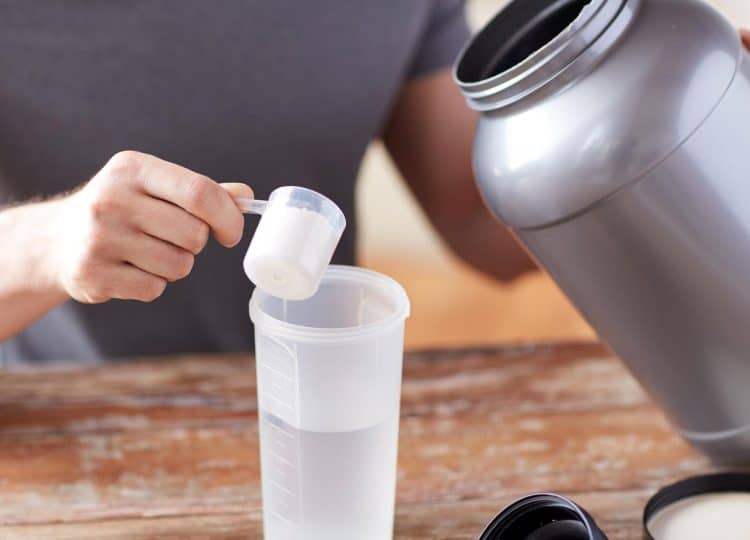As a veteran personal trainer with a professional interest in nutrition, I often have to remind my clients that “you are what you eat.” That’s because your diet is the foundation on which your workouts are built. It doesn’t matter what you do in the gym; if your diet sucks, so too will your results.
That’s because everything you eat directly affects how your body looks, feels, and performs. Proteins, glucose, fatty acids, fiber, vitamins, minerals – your body needs all these substances and more to function correctly.
It’s no exaggeration to say that a poor diet will undermine your progress.
However, the phrase “you are what you eat” is only a half-truth. The reality is that you are what you digest and absorb. If you can’t break down your food into its essential parts, you’ll miss out on the benefits it should provide.
This raises an interesting question: Does walking help or hinder your ability to break down and utilize the nutrients in your food?
In this article, I explore the realities of walking after eating and whether a post-meal walk will boost digestion.
Level Up Your Fitness: Join our 💪 strong community in Fitness Volt Newsletter. Get daily inspiration, expert-backed workouts, nutrition tips, the latest in strength sports, and the support you need to reach your goals. Subscribe for free!
Digestion Basics
Most people don’t spend much time thinking about digestion. After all, apart from chewing and swallowing, digestion is a completely involuntary process. However, to understand how walking may aid digestion, it’s worth taking a brief look at the passage of food through the digestive system (1).
The Stages of Digestion
Digestion is the process of turning food into smaller, more usable components for absorption. It starts in the mouth with chewing, where food is mechanically broken down and mixed with saliva for easy swallowing. As well as being a lubricant, saliva contains enzymes that start acting on any carbohydrates you’ve eaten.
After chewing and swallowing, food passes down a muscular tube called the esophagus and into your stomach, where it encounters more digestive acids and enzymes. Your stomach churns and turns this food into a nutrient-rich semi-liquid called chyme.
From the stomach, the chyme enters the small intestines via the duodenum. The small intestines are only small in diameter and are actually very long. An average small intestine measures 20 to 25 feet and contains many folds called villi. This provides a huge surface area for the absorption of nutrients into the blood.
After the small intestine, the remaining food passes into the colon or large intestine. This series of tubes is about five feet long but has a larger diameter, hence its name. The large intestine is where the last of the nutrients, water, and electrolytes are absorbed. Waste, i.e., undigested food, is then formed into feces for elimination via the rectum and anus.
The large intestine also contains billions of healthy bacteria, which play a critical role in the health and efficiency of the digestive system.
Other organs that play essential roles in digestion include:
- The pancreas, which produces insulin and digestive enzymes
- The liver, which produces bile acid for the breakdown of dietary fats
- The gall bladder, which stores bile acid
All of these organs work together with the stomach, small intestine, and large intestine to break down and utilize your food.
The Digestive Benefits of Walking After Eating
Now that you understand the digestive process, the question is: Does walking after eating help or hinder digestion?
Walking after meals used to be a common practice. It was probably something that your great-grandparents did. However, with the advent of things like TV, eating while you work, and driving instead of walking to work after breakfast, post-meal walking is far less prevalent than it once was.
That’s a shame because a large body of research suggests that walking after eating can be beneficial for digestion. Given how vital diet and digestion are for your health, fitness, and appearance, walking after meals could be a great addition to your day.
The proven digestive benefits of post-meal walks include:
1. Improved Digestive Efficiency
A study published on PubMed found that walking after eating stimulates the stomach and intestines, reducing the time it takes for food to pass through the digestive system (2).
Timely transit of food along the digestive tract ensures proper breakdown and absorption of your meals. In contrast, long transit times are linked to nutrient malabsorption, constipation, and other digestive issues.
In short, a walk after eating increases your chances of getting more nutrients from your food, increasing the nutritional value of your meals.
2. Blood Sugar Regulation
Dietary carbohydrates are broken down into glucose. Ideally, that glucose should be rapidly converted into glycogen and stored in your muscles and liver or used for instant energy. However, because of insulin resistance, glucose often remains in the blood, resulting in high blood sugar levels.
High blood sugar levels can cause many problems, including weight/fat gain, type II diabetes, systemic inflammation, heart disease, and kidney disease. According to research from PubMed, walking after meals helps speed up the dispersal of glucose, lowering blood sugar levels (4). This is good for both your health and your waistline!
Related: Understanding the Glycemic Index for Optimal Performance
Level Up Your Fitness: Join our 💪 strong community in Fitness Volt Newsletter. Get daily inspiration, expert-backed workouts, nutrition tips, the latest in strength sports, and the support you need to reach your goals. Subscribe for free!
3. Fewer Gastric Upsets
Gas and bloating are common digestive problems. Bulking bodybuilders and exercisers on weight-gaining diets often suffer from digestive discomfort. Eating large, frequent meals can overwhelm your digestive system, leading to stomach pain. Gastric distress can be a frequent occurrence for non-exercisers, too.
Many people treat these issues with medications. However, while things like antacids and anti-gas meds can help relieve troublesome symptoms, they do little for the cause of the problem – poor digestion.
Research suggests that walking after eating is an effective way to reduce and even eliminate post-meal discomfort, even in people with irritable bowel syndrome (5).
So, the next time you feel bloated or gassy after eating, try going for a walk instead of popping Tums. In many cases, this will provide faster, more effective relief.
4. Better Protein Absorption
All exercisers know that protein is critical for post-exercise recovery and muscle growth. That’s why they consume protein powder and protein bars and follow high-protein diets. However, all that dietary protein won’t do as much for you as it could if you can’t absorb it efficiently.
In another study published on PubMed, researchers found that a post-meal walk improves protein digestion and amino acid absorption (3). Needless to say, this is excellent news for anyone who wants to maximize the effect of their protein intake.
Related: Protein Intake Calculator
5. Weight Management
Walking is a great way to lose weight and burn fat. Because it’s accessible and relatively easy, you can walk every day without interfering with your regular workout routine. Clocking up 8-10k steps per day can have a significant impact on your weight management efforts. Walking is also incredibly good for your health.
However, research indicates that walking immediately after eating may be more effective for weight loss than waiting an hour (6).
While several mechanisms are potentially responsible for this benefit, the main one is probably the increase in glucose uptake into muscle cells and away from fat cells. Going for a walk after eating may also reduce the temptation to overeat or have a dessert!
Walking after meals also burns some extra kilocalories, which will further enhance your weight-loss efforts.
How to Take an Effective Walk After Eating
Have I inspired you to go for a walk after meals instead of crashing on the couch? That’s good to hear! But, before you step out and “take the air,” let’s make your post-meal walk as effective as possible with a few simple guidelines.
Timing
Plan to start your walk within 10-15 minutes after finishing your meal. Heading out too soon could cause discomfort. In contrast, waiting too long may make your post-meal walk less beneficial.
Duration
While any walk is a good walk, 10-15 minutes is generally enough to enhance digestion. That said, longer walks of 30 minutes are usually better for weight management, as they burn more kilocalories.
Pace
Don’t turn your post-meal walk into a workout or race. Walking too fast will divert blood away from your digestive system and to your muscles, shutting down digestion. Instead, you should walk at a moderate, comfortable pace.
Terrain/Route
Choose a flat, easy route for your post-meal walk, e.g., a stroll around the block or neighborhood. Don’t just what should be a leisurely walk into a hilly hike!
Posture
Avoid hunching over during your post-meal walks. Hunching compresses your digestive organs. In contrast, good posture aids digestion. Walk tall with your head up, shoulders down and back, and core lightly engaged.
Relax
Don’t rush your post-meal walk, use your phone, or do anything else that might raise your stress levels. Stress impedes digestion. Instead, use your walk to unwind and relax. Breathe slowly and easily, and enjoy the sights and sounds around you.
Hydration
Drink a tall glass of water before heading out on your post-meal walk. Good hydration enhances digestion and helps prevent dehydration-related digestive issues like constipation. Drinking water with your meal may also aid digestion.
Consistency
You’ll get better results from post-meal walking if you make it a habit. While it may be impractical to walk after every meal, you should at least walk after your main meal of the day, which, for most people, happens in the evening.
Conclusion
Walking after eating can do wonders for your digestion. A post-meal walk enhances food breakdown and nutrient absorption, alleviates stomach discomfort, and accelerates weight loss. You don’t have to walk far or fast to enjoy these benefits – a leisurely 15 to 20-minute stroll is all you need.
So, here’s my challenge to you: Go for a short walk after your main meal of the day. Do this for a month and assess your results. I bet you’ll love the benefits and keep doing it long after the month ends.
Questions? Concerns? Drop me a line in the comments section below, and I’ll get back to you ASAP!
References:
- National Institute of Diabetes, Digestive, and Kidney Diseases: Your Digestive System & How it Works.
- Hamaguchi T, Tayama J, Suzuki M, Nakaya N, Takizawa H, Koizumi K, Amano Y, Kanazawa M, Fukudo S. The effects of locomotor activity on gastrointestinal symptoms of irritable bowel syndrome among younger people: An observational study. PLoS One. 2020 May 29;15(5):e0234089. doi: 10.1371/journal.pone.0234089. Erratum in: PLoS One. 2020 Dec 17;15(12):e0244465. PMID: 32470098; PMCID: PMC7259724.
- Cruthirds CL, Deutz NEP, Ligthart-Melis GC, Simbo SY, Engelen MPKJ. Walking exercise alters protein digestion, amino acid absorption, and whole-body protein kinetics in older adults with and without COPD. J Appl Physiol (1985). 2021 Feb 1;130(2):435-444. doi: 10.1152/japplphysiol.00783.2020. Epub 2020 Nov 19. PMID: 33211598; PMCID: PMC8828265.
- Yamanouchi K, Abe R, Takeda A, Atsumi Y, Shichiri M, Sato Y. The effect of walking before and after breakfast on blood glucose levels in patients with type 1 diabetes treated with intensive insulin therapy. Diabetes Res Clin Pract. 2002 Oct;58(1):11-8. doi: 10.1016/s0168-8227(02)00099-2. PMID: 12161052.
- Hosseini-Asl MK, Taherifard E, Mousavi MR. The effect of a short-term physical activity after meals on gastrointestinal symptoms in individuals with functional abdominal bloating: a randomized clinical trial. Gastroenterol Hepatol Bed Bench. 2021 Winter;14(1):59-66. PMID: 33868611; PMCID: PMC8035544.
- Hijikata Y, Yamada S. Walking just after a meal seems to be more effective for weight loss than waiting for one hour to walk after a meal. Int J Gen Med. 2011;4:447-50. doi: 10.2147/IJGM.S18837. Epub 2011 Jun 9. PMID: 21731896; PMCID: PMC3119587.












